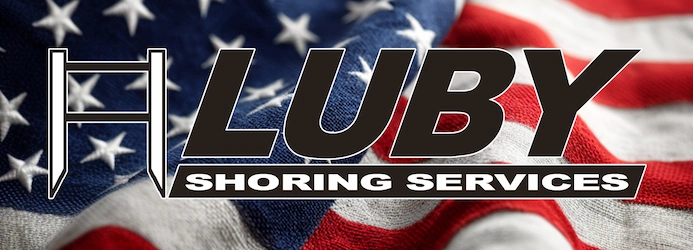Whenever weather conditions change in the slightest, the CP should be inspecting the soil for changes.

Summer rains can create several challenges when it comes to building a trench and then maintaining trench safety. A cave-in can happen in a matter of seconds, seriously injuring, even killing, a worker. Therefore, it is critical to know how to handle the extra moisture in order to keep your crew safe this summer.
Understanding the Dangers of Trenching and Excavation
OSHA states that trenching and excavation are among the most hazardous construction operations. Cave-ins pose the greatest risk as they result in more worker fatalities than any other type of excavation-related accident. Dozens of workers die each year as a result of cave-ins.
The U.S. Bureau of Labor Statistics shows that there were 36 excavation or trenching cave-in deaths in the U.S. in 2016. The majority of these injuries occurred in the construction industry. It’s important for workers to understand that any excavation has the potential to cause serious injury or fatality. Systems must be in place to prevent accidents such a cave-ins. Once in place, these precautions must be carried out consistently.
The Job of the Competent Person
Wet weather can quickly change what’s safe and what is not. When it rains, the water can make the sides of the trench less stable. OSHA requires that trenches must be inspected daily and as conditions change by a CP (competent person). This person is one who is capable of identifying existing problems and also predicting potential problems.
The CP will ensure that the crew is using their protective systems and that they are set up correctly. They will make sure that workers aren’t taking chances, that the ladders are set up properly, and that everything else that goes along with keeping the trench safe is in place before a worker enters it.
According to OSHA 1926.651(h)(1), employees are not allowed to work in excavations in which there is accumulated water, or in excavations in which water is accumulating, until the CP inspects the excavation and stabilizes the trench somehow. Using a trench box is the quickest and easiest way to support a trench wall. Also, the CP needs to take action to remove the water, such as using a pump. If a pump is used, the CP has to make sure it is working properly.
Finally, Inspect! Inspect! Inspect! Whenever weather conditions change in the slightest, the CP should be inspecting the soil for changes. It could alter the protective system that is used, such as if a contractor is using hydraulic shores and water makes the trench walls unstable, shores cannot be used. If a contractor is sloping a trench, as soon as water gets into the trench, the angle of the slope needs to be flattened.
Additional Safety Tips
Other general trenching and excavation rules stated by OSHA include:
- Keep heavy equipment away from the edges of the trench
- Do not work under raised loads
- Determine where underground utilities are located
- Keep surcharge loads at least 2 feet away from the edges of the trench
- Test the area for hazardous fumes, toxic gases, and low oxygen
- Inspect trenches at the start of each shift
- Inspect the trench after heavy rainfall
St. Louis Trenching and Excavation
At Luby Shoring Services, we are experts in trench shoring and excavation projects. We have the expertise to work with you on site specific engineering services. We can quickly complete any job while meeting OSHA safety regulations.
In addition, we provide a wide selection of standard and custom trench shielding and shoring options. Our equipment is cost effective, safe and versatile, relied upon by underground utility professionals, municipalities and private contractors. All products are Professional Engineer certified to help you meet OSHA’s excavation and trench safety standards.
